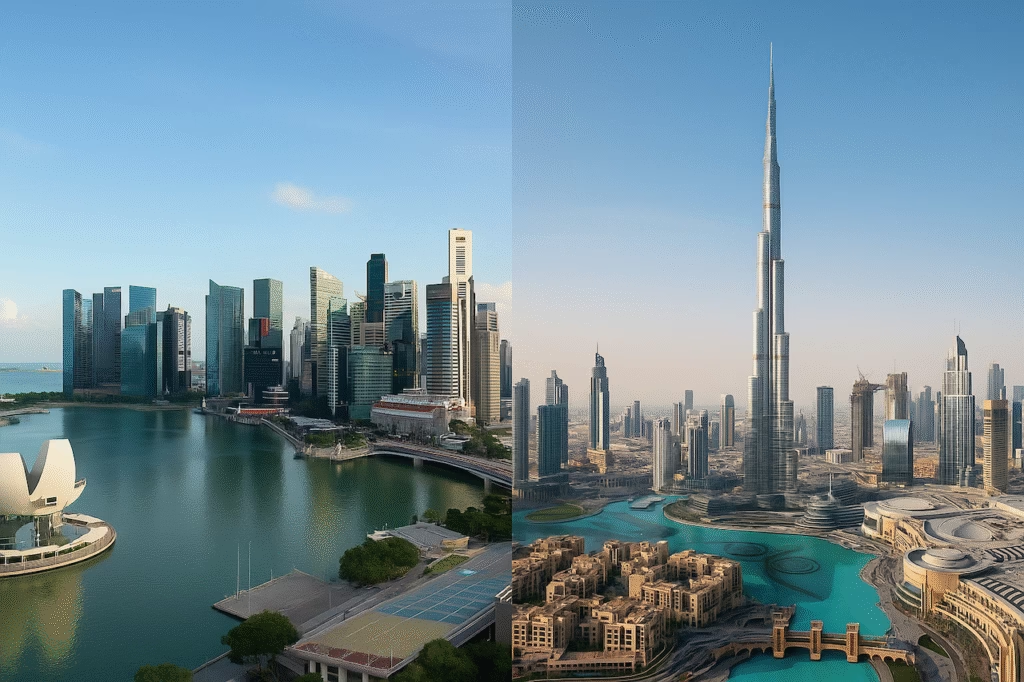In Asia’s Corporate Real Estate (CRE) markets, opportunity has typically been sector-led. Whether it’s tech firms scaling fast in Bangalore or financial institutions consolidating in Hong Kong or Singapore, demand patterns have tended to follow industry momentum.
But as we begin to look towards 2026, there’s value in re-examining if your business development efforts align with where real demand is likely to come from.
Many CRE firms and advisors understandably focus on familiar territory such as financial services, professional services, tech. We know these sectors have been dependable for years. They’re well-understood, fairly stable, and typically command prime space in established CBDs. In markets like Singapore and Tokyo, the big banks and consultancies still anchor some of the city’s most prestigious real estate.
But it’s also true that some of these occupiers are reducing footprints or reconfiguring their space. Hybrid working models, cost rationalisation, and regional rebalancing are all quietly reshaping what “core” demand looks like. And while tech remains a major engine of activity, it’s also a crowded space, both in terms of competition for clients and volatility within the sector itself.
So where is the new growth coming from?
Sectors Quietly Gaining Ground
If we zoom out, the more compelling activity is emerging in places that aren’t always on the front page. These are industries that may not dominate the headlines, but they are increasingly driving leasing activity, capital investment, and long-term strategic growth across the region.
1. Life Sciences and Healthcare Infrastructure
There’s been a noticeable uptick in demand for lab-enabled spaces and research facilities, especially in Singapore, Hyderabad, and parts of China. Companies like WuXi AppTec (China), Dr. Reddy’s (India), and BioNTech (which opened a regional HQ in Singapore) are part of a broader pivot towards biotech and pharmaceutical innovation. With governments prioritising health resilience and supply chain localisation, the sector’s footprint is expanding.

2. Advanced Manufacturing and Defence
Driven by both economic policy and geopolitics, countries like India, Japan, and South Korea are investing heavily in homegrown manufacturing capacity, particularly in aerospace, semiconductors, and defence. Firms such as Bharat Electronics, Mitsubishi Heavy Industries, and Hanwha Aerospace are scaling up, creating real estate needs not just for factories, but for engineering offices and support functions.
3. Green Energy and Cleantech
As ESG becomes a non-negotiable across investment portfolios, energy transition is gaining real momentum. From hydrogen and solar to electric vehicle infrastructure, there’s growing demand for technical space and operational bases. Singapore’s Sembcorp, Japan’s ENEOS, and India’s ReNew Power are just a few examples of regional players expanding their real estate footprint to support growth in renewables and energy storage.
4. Data Infrastructure
The growth in AI, cloud computing, and regional digital transformation is fuelling huge demand for data centres and supporting infrastructure. While Singapore has historically been a hub, recent land and energy constraints are pushing development into Johor (Malaysia), Batam (Indonesia), and second-tier Indian cities. Major players to watch include AirTrunk, ST Telemedia, and Yondr Group, all of whom are building aggressively across the region.

5. Logistics and Supply Chain Resilience
The “China+1” strategy is driving manufacturers and logistics operators to diversify their geographic footprint. Vietnam, Thailand, and the Philippines are seeing increased activity from the likes of Foxconn, Samsung, and Maersk, with knock-on effects for warehousing, cross-dock facilities, and integrated industrial parks.
So, What Does This Mean for CRE Teams?
In a word: realignment.
Many CRE businesses are still heavily oriented towards legacy sectors and often for good reason. These clients are established, procurement is structured, and their relationships are deep. But that can also lead to inertia.
Meanwhile, the industries above are expanding, evolving, and crucially looking for partners who understand their unique requirements. And these firms don’t always behave like traditional occupiers. They may not be on your radar yet, but they’re building real pipelines.
Now is a good time to step back and assess:
-
- Are your teams plugged into where capital is flowing?
-
- Do your BD strategies reflect where future demand is likely to emerge?
-
- Are you nurturing relationships in sectors that didn’t exist in your client list just a couple of years ago?
There’s no need for a wholesale pivot, but a modest rebalancing of effort and a willingness to learn the language of emerging sectors can go a long way in positioning your business for long-term relevance.
If your business is still focused entirely on today’s occupiers, it might be time to reframe the question. Not just “Where’s the next deal coming from?”, but “Are we looking in the right places?”
Because increasingly, the answer may well lie outside your obvious target list.
![The [RE]Search Co.](https://re-search.co/wp-content/uploads/2025/02/The-RE-Search-Co-Orange_Grey-png-350x51.avif)












